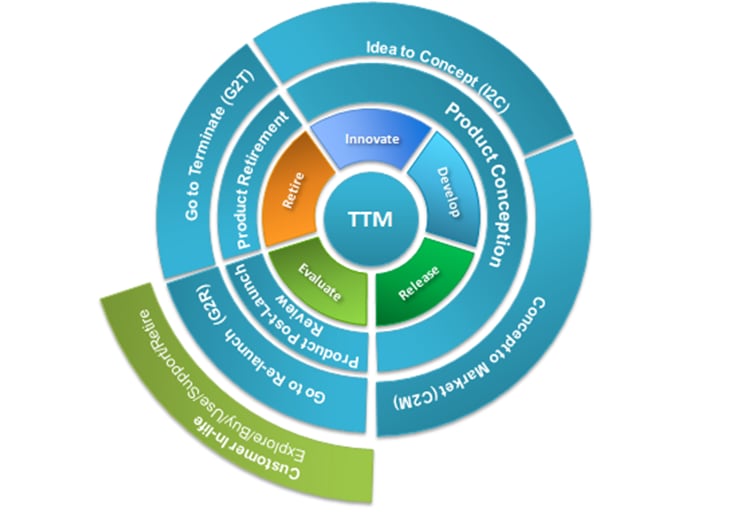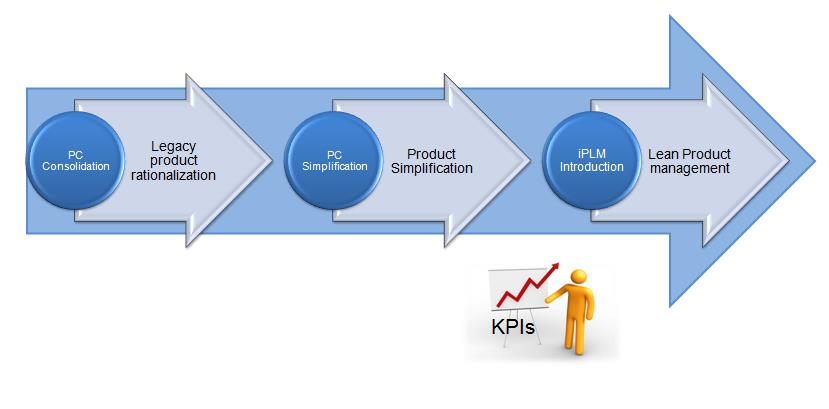Key takeaways:
- PCT uses standard tools and processes that add value to analyzing, designing, and releasing new products and services.
- It introduces best practices for reusing building blocks and provides a clear governance model for product managers to measure TTM.
By lowering the marketing and IT costs of launching new ideas more quickly, telcos can move from a product-centric to a service-centric business model. At the same time, a precise approach to product catalogue transformation can cut TTM by more than 30 percent on top of existing TTM improvements made by agile system tools.

Stay lean
As telcos move towards open digital ecosystems that deliver OTT and IoT services, they need to establish best practices for innovating at the ideas stage. They must also ensure consistency as standards increase, improve product design, and raise reuse levels. Product marketers can thrive by making their employees more effective, introducing lean processes, and adopting agile tools for product catalogues.
Under a CMO, product marketing managers and departments are responsible for product innovation, design, testing, forecasts, and lifecycle management. Challenges include exploiting product building blocks more effectively; considering whether product marketing is better when coordinated with other organizational functions; and improving innovation, forecasting, and pricing. The following items must also be well-defined: management; product launch governance, roles, and responsibilities for technology; and service creation.
In the automotive industry, reaching a target TTM involves monitoring the phases of a product launch with specific KPIs under an ad hoc governance model. Auto parts and components from different suppliers can be used to automate the product launch process.

Digital disruption is leading telcos to adopt similar methodologies and best practices that accelerate TTM and make their organizations and solutions more agile. They’re simplifying products into units and reusable parts such as micro-services and frequently reusing them to launch partners’ new products and services or obtain parts from partners.
Telcos previously didn’t feel so much pressure to standardize Product Lifecycle Management (PLM) for various reasons, including simpler products and features coupled with a homogenous network and provider landscape. But in today’s digital world, the environment is no longer simple and static, requiring instead a controlled and coordinated PLM. Service Providers (SP) must support a richer catalogue of products and services, which increases the number of stakeholders involved in product innovation. Product managers must thus track the full product lifecycle from concept to retirement.
Marketing departments tend to configure product catalogues by themselves and are keen to optimize the go-to-market process by reusing past configurations. To be aster and more agile, telcos’ IT departments prefer solutions with reusable product parts, which are also known as building blocks or product templates. They can then hand over the parts for configuring product catalogues to business departments in the move to becoming service-centric.
Agility without innovation isn’t enough. Telcos need open digital ecosystems to develop products and services for customers and partners. The platform implementing the digital product catalogue must integrate partners’ product catalogues.
Product Catalogue Transformation (PCT)

Catalogue-driven business transformation merged into a unique product catalogue – the centralized TelcoOS product catalogue – to become the master of product configurations, both saving costs and cutting TTM. Unfortunately, telcos might be unable to reach their targets due to previous IT investments and impact on the organization.
Transforming your BSS by replacing multiple vendor solutions with a single platform, for example, with the Huawei’s next-generation BSS, moves your commercial and technical product catalogue to a new stack that impacts the go-to-market process. At this point, you need methodologies that support the whole company on this journey.
Executives’ awareness of this journey isn’t always there. In response, the Huawei consultancy service raises awareness, engages people, and sets out the timescale and risks. It creates clean, simple, and lean business processes on top of a new digital product catalogue.
Comprising four features, PCT is a framework-driven approach for reimagining how products are applied to the system capabilities of product catalogues.
Product catalogue consolidation (PCC) removes obsolete products and services and also streamlines product catalogue lines, features, and variants to focus on products with more customers and higher profits.
Product catalogue simplification (PCS) reduces products to their basic elements and common factors, creating a new way to implement products and services. It changes the mindset from legacy products to system product building blocks, applying a 1-1-1 (1-day, 1-week, or 1-month) speed model depending on product complexity. CXOs usually expect the Huawei solution to cut TTM by 50 percent.
Integrated Product Lifecycle Management (iPLM) moves Product Lifecycle Management from thick to thin and integrated. Designed to achieve agility and innovation for customers, Huawei’s unique iPLM solution translates marketing requirements into system configurations based on transforming the 3Ps – people, processes, and platform. The solution is E2E, with each process mapped to one or more phases in the product lifecycle. These phases are concept, design, development, pricing, marketing, rollout, publishing, activation, maintenance, modification, upgrade, retirement, and decommissioning. Each stage influences TTM. The solution standardizes product terminology, establishes a responsibility matrix to boost interdepartmental cooperation, measures and improves KPIs using Product Data Management functionality, and enables decisions to be made quickly and at the right time.
Product and Service KPIs measure the success of product development and identify where improvements are needed.
PCT uses standard tools and processes that add value to analyzing, designing, and releasing new products and services. It introduces best practices for reusing building blocks and provides a clear governance model for product managers to measure TTM. PCT cuts TTM by more than one-third on top of the TTM improvements made by agile system tools, ensuring your products get to market faster than ever before.








